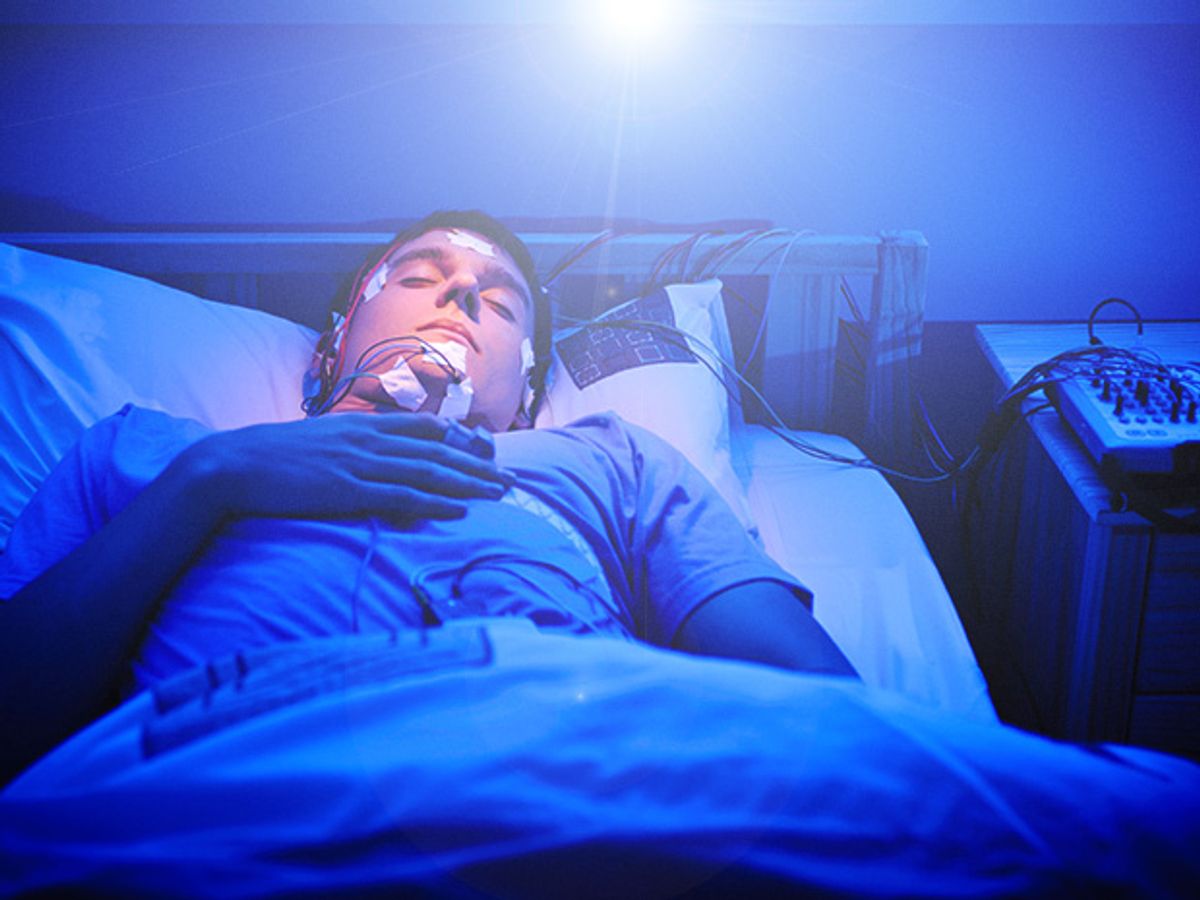Imagine if you could eliminate the tangle of wires that snake across a hospital patient’s body so machines can monitor his or her vital signs. Sounds like a great idea. But wirelessly transmitting data from the patient to the machines cluttering hospital rooms creates the risk of electromagnetic interference. So one group of researchers in South Korea is proposing that some machines use Li-Fi instead.
The team used visible light communications, also known as Li-Fi, to transmit readings from an electroencephalograph (EEG) over a distance of about 50 centimeters. “It’s a very much friendlier means of transmitting biomedical signals in a hospital,” says Yeon Ho Chung, an engineer at Pukyong National University in Busan. The group described their work in the IEEE Sensors Journal.
The signals from an EEG, which measures brain activity, are relatively weak ones, Chung says, with power ranging from 0.5 to 100 millivolts, and frequencies between 0.5 and 45 hertz. The faintness of the signals required the engineers to first amplify them enough to drive the red, green, and blue LEDs they were using to transmit their data.
Transmitting over a single channel produced a reading that was distorted at some points by bit errors. To counter that, the team used color filters and photodiodes matched to each of the three LED colors. Comparing the signals at each of the three photodiodes allowed them to select the bits that were most likely to be correct. Keeping the error rate low, Chung says, is critical to getting useful readings of brain activity—particularly since the electrical activity in the brain can produce a complex signal. “You have to be very accurate. You can’t make any mistakes in transmitting.”
Other researchers at Pukyong have already demonstrated Li-Fi transmission of electrocardiogram readings; Chung’s team is looking into using it for electrooculography, which measures eye movement and could be used by paralyzed people to control computers.
Wireless transmission from medical devices frees up patients so they can move around rather than being tethered to one spot. And using light rather than radio frequencies avoids interference on a crowded radio spectrum.
Groups around the world are exploring Li-Fi as a means of boosting data rates and transmitting more information between computers without worrying about the limitations of radio. Others are developing optical transmission schemes that rely instead on infrared light. “There’s actually vast opportunities in visible light communications,” Chung says. “We see really great potential in this.”
Neil Savage is a freelance science and technology writer based in Lowell, Mass., and a frequent contributor to IEEE Spectrum. His topics of interest include photonics, physics, computing, materials science, and semiconductors. His most recent article, “Tiny Satellites Could Distribute Quantum Keys,” describes an experiment in which cryptographic keys were distributed from satellites released from the International Space Station. He serves on the steering committee of New England Science Writers.



